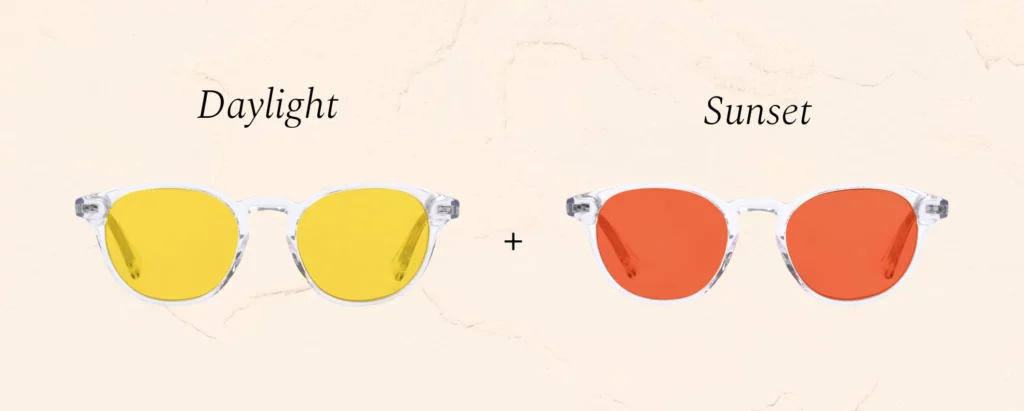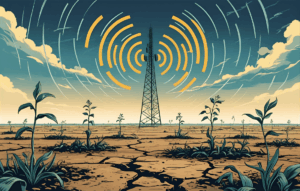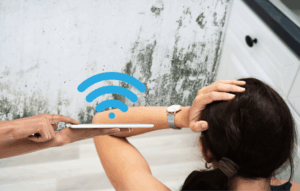In our everyday lives, the glow of artificial light is a constant presence, from the fluorescent lights flickering overhead to the blue light emanating from our screens. Its convenience and functionality are undeniable, and its invention is a significant milestone in human history. While Thomas Edison is often celebrated as the pioneer of the light bulb, the groundwork laid by inventors like Alessandro Volta, Humphrey Davy, and Joseph Swan is equally monumental. However, recent scientific inquiries suggest that our prolonged exposure to artificial light, especially at night, might be contributing to a less visible but escalating global health issue: obesity.
The development of the light bulb was more than just a technological triumph; it fundamentally transformed human lifestyle and activity patterns. The ability to extend productive hours beyond sunset has reshaped societies, economies, and the way we interact with our environment. Yet, this constant illumination could be casting a shadow on our health.
The Dark Side of Light: Artificial Light-at-Night (ALAN) and Obesity
A groundbreaking study published in the International Journal of Obesity by Rybnikova, Haim, and Portnov (2016) presents compelling evidence linking exposure to artificial light at night (ALAN) with increased obesity rates worldwide. The study utilized satellite images to measure nighttime illumination and analyzed data from over 80 countries, correlating these with obesity prevalence rates reported by the World Health Organization (WHO).
The findings are striking: ALAN emerged as a significant predictor of higher obesity rates, alongside other factors like GDP per capita, urbanization levels, and regional dietary habits. The researchers suggest that ALAN might suppress melatonin production—a hormone that regulates sleep and metabolic functions—and disrupt circadian rhythms. This disruption could lead to physiological and behavioral changes that increase the likelihood of weight gain.
How Blue Light Disrupts Our Circadian Rhythms
Our bodies are naturally tuned to the cycles of daylight and darkness. Circadian rhythms, our internal biological clocks, regulate sleep, hormone production, and other vital functions. Blue light, which is abundant in natural daylight, plays a crucial role in keeping us awake and alert during the day. But exposure to blue light from artificial sources like LED lights at night can throw our circadian rhythms off balance.
One study highlights that blue light suppresses melatonin production, the hormone responsible for signaling our bodies that it’s time to sleep. When melatonin production is delayed or reduced, our sleep patterns become disrupted. This can lead to chronic sleep deprivation, which is linked to numerous health issues.
Blue Light and Its Link to Obesity
Circling back, one of the more alarming findings is the connection between blue light exposure and obesity. Another study points out that when our sleep is disrupted by blue light, it affects our metabolic processes. Poor sleep quality can lead to increased appetite and cravings for unhealthy foods, contributing to weight gain.
Moreover, blue light exposure has been linked to insulin resistance, a condition where the body’s cells don’t respond well to insulin. This makes it harder for our bodies to manage blood sugar levels effectively, setting the stage for obesity and type 2 diabetes. The study suggests that our modern lifestyle, with constant blue light exposure, is a significant factor in the growing obesity epidemic.
Broader Health Implications of Blue Light
Beyond sleep disruption and obesity, another study also points to other serious health risks associated with prolonged blue light exposure. These include:
Cardiovascular Diseases: Disrupted sleep patterns can lead to high blood pressure, heart disease, and other cardiovascular issues.
Cancer: There’s evidence that long-term disruption of circadian rhythms may increase the risk of certain types of cancer.
Mental Health: Poor sleep and disrupted circadian rhythms are also linked to anxiety, depression, and other mental health disorders.
Further scientific evidence supports the notion that light exposure at night can affect our biological functions. Numerous studies indicate that melatonin regulates metabolism, and its suppression can lead to increased insulin resistance, a precursor to obesity and type 2 diabetes. Additionally, disrupted circadian rhythms have been linked to poor dietary choices, increased appetite, and ultimately, greater caloric intake.
Controversial Policy Changes: The 2024 Light Bulb Ban
In a recent development, the U.S. Department of Energy (DOE) has issued a final rule that will phase out the use of certain types of light bulbs by 2028, favoring blue-pump LED light bulbs. This decision has sparked considerable controversy, as it seemingly ignores the health benefits associated with the spectrum of light emitted by different types of bulbs. Circadian-friendly lighting, which adjusts blue light exposure by natural circadian rhythms, has been shown to have significant health benefits, such as better sleep quality and reduced risk of chronic diseases.
Critics argue that the new DOE regulations, which focus on maximizing lumens per watt, fail to account for the health implications of high blue light exposure at night. This could potentially exacerbate health issues such as sleep disorders, obesity, and various chronic diseases, as numerous studies have shown the harmful effects of blue-enriched light on human health.
Practical Solutions for Mitigating the Effects of ALAN
Given the potential health implications, it is crucial to consider ways to mitigate the impact of ALAN on our lives. Some practical measures include:
1. Blue Light Blocking Glasses
One practical approach to reducing blue light exposure is through the use of blue light-blocking glasses. Ra Optics, for example, stands out in this market by using technology that filters out the specific wavelengths of blue light proven to be the most disruptive at night. Unlike standard blue light blockers, Ra Optics glasses are designed based on extensive research to ensure that they block only the harmful blue wavelengths while allowing non-disruptive wavelengths to pass through. This precision helps maintain healthy circadian rhythms while protecting eye health and improving sleep quality.
2. Develop a Nighttime Routine
Establishing a nighttime routine that minimizes exposure to bright lights, particularly blue light from screens, can help maintain natural circadian rhythms.
3. Using Incandescent Lights and No-Flicker Bulbs
These lighting options produce a spectrum of light that is closer to natural light and less disruptive to melatonin production compared to fluorescent or LED lights.
4. Smartphone and Computer Settings
Most modern smartphones and computers offer settings that reduce blue light emission. For instance, setting an iPhone to “Night Shift” mode after sunset can minimize blue light exposure.
5. Non-toxic Beeswax Candles
Using non-toxic beeswax candles for evening activities such as dining or reading can provide adequate light without the blue light emitted by most electric bulbs. Beeswax candles offer a natural, chemical-free light source that can create a calming, amber light environment, conducive to relaxation and preparation for sleep.
6. Sunshine Exposure
Regular breaks to expose oneself to natural sunlight can help maintain a healthy circadian rhythm. Even a brief walk outside during daylight can significantly impact internal clock synchronization, especially for those spending extensive periods indoors under artificial lighting.
Conclusion: A Balanced Approach to Light
The invention of the light bulb brought countless benefits, illuminating our path to progress. However, as with many advancements, it comes with its challenges. The association between artificial light exposure and obesity adds a complex layer to our understanding of modern health dilemmas. By integrating scientific insights into our daily lives and policy-making, we can harness the benefits of artificial light while mitigating its unintended effects. This balanced approach can lead us to a healthier, more enlightened future.














